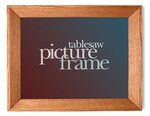We may receive a commission when you use our affiliate links. However, this does not impact our recommendations.

So close, after nearly a year. Roll on, countertop fabricators!
Every so often you run into someone who gets off on pointing out his or her superiority to others. I’m talking specifically about the guy who shows up on the job site and loudly criticizes the performance of those who came before, instead of just getting on with the work at hand.
Sure, some people are less skilled than others (though that doesn’t automatically mean you should complain to the client about their deficiencies). Also, mistakes happen; some are serious enough to warrant redoing the job, but others can be worked with.
Sometimes, less-than-stellar work results from depression or a broken heart, in which case, Hello! Ever heard of compassion? Ever needed it? (I have.)
On other occasions, run of the mill quality may be all a client is willing to pay for.*
Along with many of my fellow tradespeople, I have learned the beauty of doing what I can to make others’ work look better, simply for the sake of a good overall job. Having been the beneficiary of such generosity in a few cases where a painter or trim carpenter made my work look better instead of complaining to our client about what a flawed tradesperson I was, I’m convinced that this is the best way to behave when working with and for others.
Here are a couple of examples from one of my recent jobs.
Exhibit 1

Talk about “in your face.” I set the vanity on the level floor after meticulously measuring and drilling for the drain and supply pipes, only to find that the wall tile was laid out of plumb.
After years spent camping in a tent set up in an old barn on their dream property, these longtime clients had a lovely, compact, aging-in-place-appropriate house built. They had the bathroom walls and floors tiled — a major investment that took the installers weeks to complete. When I set the cabinet in place on the level floor (honestly, that’s something I’m not used to), it was suddenly clear, thanks to the vanity’s left back edge, that the vertical tile joints were out of plumb. With the bottom of the cabinet in line with the joint, the top was 1/4″ away. Ouch.
Fortunately I was able to implement a simple fix. The vanity was getting an applied side — in this case, shop-made tongue and groove boards. (Note: The same solution would have worked with a slab or frame-and-panel side.) I affixed the material at the front of the cabinet with brads. As I neared the back, I nailed the pieces of side material at the bottom but inserted a shim between the tongue-and-groove material and the cabinet to create a gradual flare at the top. By the time the side met the tile, the line was straight. The counter material is marble; the fabricators will make a template based on actual conditions, not measurements. Problem solved.

A couple of shims inserted at strategic points between the cabinet side and the finish material did the trick. The shims on the floor are simply raising the tongue-and-groove finish material up to the necessary height; I wanted to preserve about 1/8″ gap between the bottoms of the boards and the floor to keep the wood from soaking up water when the floor is washed.
Exhibit 2

See the problem? The face frame of this cabinet, over a refrigerator, does not fall in line with the framed wall: the reveal at left was about 3/8″ greater than at right, because the wall was framed (then drywalled) out of square.
On the same job site, the architect had spec’d a refrigerator alcove for the kitchen. I suggested adding some height to the alcove to allow for a capacious storage cabinet above, in what would otherwise have been wasted space. To keep costs down, the cabinet would have a curtain (to be made by one of the clients, a skilled seamstress) instead of doors. Key to the design would be the clean, crisp reveal between the cabinet’s face frame and the front of the alcove wall.
It was a good idea in principle.
This being a job I undertook knowing full well that the clients had a limited budget and were prepared to assist in any way they could, I availed myself of their son’s help in installing the fridge cabinet the first time. (“The first time” should be a red flag.) Luckily, he was visiting from out of town.

Aaron Mitter, accomplished jazz double bass player, knows how to use his head.
The opening was framed so dramatically out of square, and perhaps even out of plumb, that what should have been an architect’s clean and crisp reveal was, well, anything but.
On my next visit to the job site, my clients and I strong-armed their fully-loaded fridge out of the alcove and unscrewed the cabinet from the wall (despite my protestations, they insisted on supporting the cabinet while I guided the process, loosening the screws and barking out suggestions for shimming, etc.). We made some improvement, but the the result is still less than perfect.
I was ready to keep at it until we achieved perfection. Then I heard one of the clients say the situation looked acceptable. While the fridge alcove will lack The Architect’s Perfect Reveal, when the boss speaks, it behooves us to listen.
*Note: I am aware that in an ideal world where tradespeople have the luxury of doing their best regardless of circumstances (such as bills that need to be paid via income from clients whose budgets may not allow for top-level craft), no such excuses are acceptable. But in the world I know, i.e. the one where people actually need to get paid for their work in order to pay their rent/mortgage, buy food, pay for health insurance and medical care, etc., even the most idealistic craftspersons learn to adapt their work to suit the budget for the job. It is possible to provide basic quality without exceeding expectations.
Here are some supplies and tools we find essential in our everyday work around the shop. We may receive a commission from sales referred by our links; however, we have carefully selected these products for their usefulness and quality.








